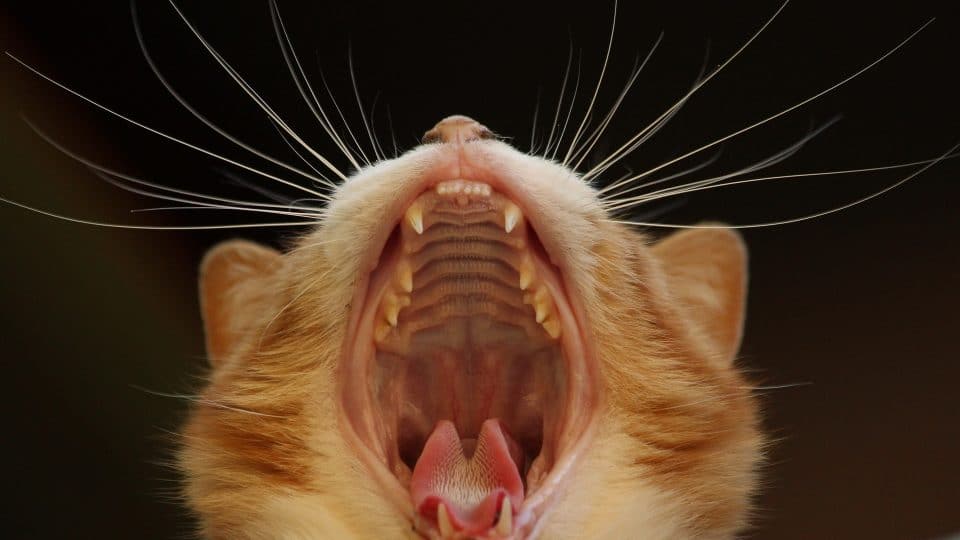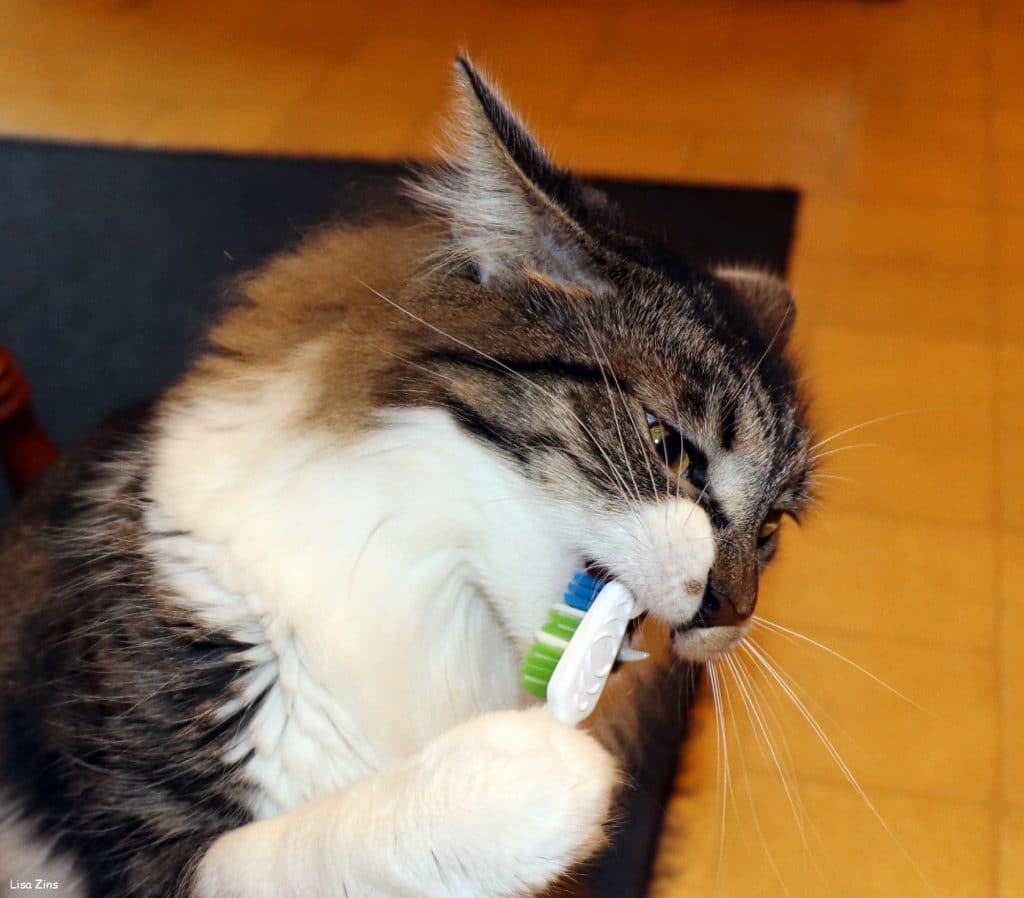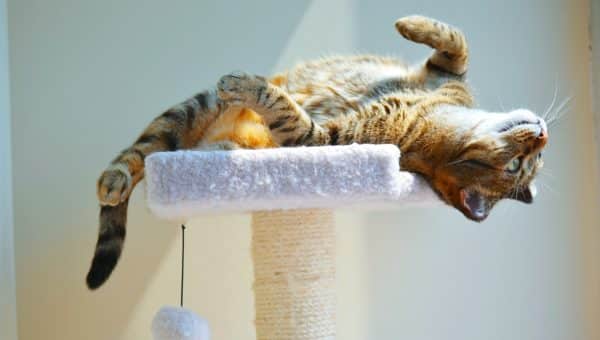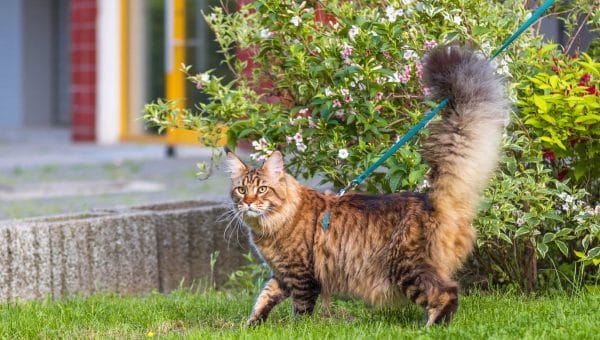- Not a substitute for professional veterinary help.
Imagine for a moment what your mouth would be like if you never brushed your teeth. Not a very pleasant picture, is it? Well, your cat’s mouth isn’t all that different from yours, which is why the American Veterinary Medical Association (AVMA) recommends taking your cat to the vet for an annual dental check up and brushing their teeth at least two times per week (ideally, once per day).
Here are the best tips for successfully brushing a cat’s teeth as well as a step-by-step guide.
Why Brushing Your Cat’s Teeth Is Important
According to VCA Hospitals, cats need daily dental care to help prevent plaque and tartar buildup. If allowed to accumulate, plaque and tartar can lead to uncomfortable tooth decay and gum disease (PetMD). Advanced periodontal disease can lead to other more serious health problems like kidney, liver, and heart disease, warns AVMA.
In addition to being vital to your cat’s overall health, daily dental care for your cat has financial benefits for you. By brushing their teeth regularly, writes AVMA, you can cut down on periodontal visits to the veterinary dentist and decrease the chances of your cat needing expensive dental surgery.
Tips for Brushing Cat Teeth
Cats are often more resistant to having their teeth brushed than dogs, so taking measures to make the experience more comfortable for them will make it easier on you, too.
Here are some tips for helping your cat accept dental care as part of their normal routine.
- Start brushing when they’re young, recommends Banfield Pet Hospital. As with most habits, a dental care regimen is easier to establish early on in your cat’s life. That’s not to say older cats can’t learn—it just might take a little more time and coaxing.
- Ease into it. Before putting a brush in your cat’s mouth, try dipping your finger in tuna water (yum, if you’re cat) and rubbing the insides of their lips and the outsides of their teeth for short periods of time (PetMD). This will help your cat get used to having their mouth touched.
- Get comfortable. Find a place that’s relaxing for you and your cat, like a couch where you both like to snuggle. If you’re worried about dripping water or toothpaste, just put a towel or plastic bin underneath you.
- Create positive associations. After brushing, give your cat a yummy treat or some snuggles. You want them to think of teeth brushing as a generally enjoyable experience.
- Make sure your cat’s nails are trimmed. This is more for your sake so your cat doesn’t try to wriggle out of your arms and accidentally scratch you.
- Be patient. Your cat might not let you brush their entire mouth in one sitting. That’s okay. Brushing some teeth is better than brushing none. Just try to get the rest of the teeth next time.
- Use pet-friendly toothpaste. Human toothpaste, baking soda, and salt can be toxic to cats, warns Banfield. Toothpaste formulated for pets comes in flavors like poultry and malt, and is safe for digestion.
- Use a toothbrush with soft bristles designed for cats or a child’s toothbrush, Banfield recommends. An adult toothbrush will be too large and abrasive for your cat’s mouth. You can also wrap your finger in gauze.
- Ask your vet about the best dental products for your cat. Lots of products market themselves as beneficial to feline dental health, but your vet is the best source of what’s truly good for your cat.
How to Brush Your Cat’s Teeth
- Find a quiet, peaceful place and put your cat on your lap. Take a minute or two just to pet them.
- You can let your cat try a lick of the toothpaste first to get used to the taste.
- Gently tip back your cat’s head and pull up their lips to expose their teeth.
- Banfield recommends brushing the outsides of the teeth with slow, soft motions, being careful to get the molars at the back of the mouth. There’s no need to brush the insides of the teeth as cats lick away most of the tartar and plaque that gets stuck there anyways, says VCA Hospitals.
- Once you’re done, give your cat some extra cuddles, if they’re still willing to be on your lap (this reward goes both ways). A treat works, too.
By taking the time to brush your cat’s teeth, you’re helping ensure a healthier more comfortable existence for them. And when you consider all the ways your cat helps improve your health, this seems like a pretty fair trade. Once they’re used to the process, brushing your cat’s teeth will just be one more way for you two to bond.
Further Reading
- How to Prepare Your Cat When You Travel
- Here’s What You Really Need to Know About Cat Declawing
- Why Does My Cat Drool?
Featured Image: Pixabay






